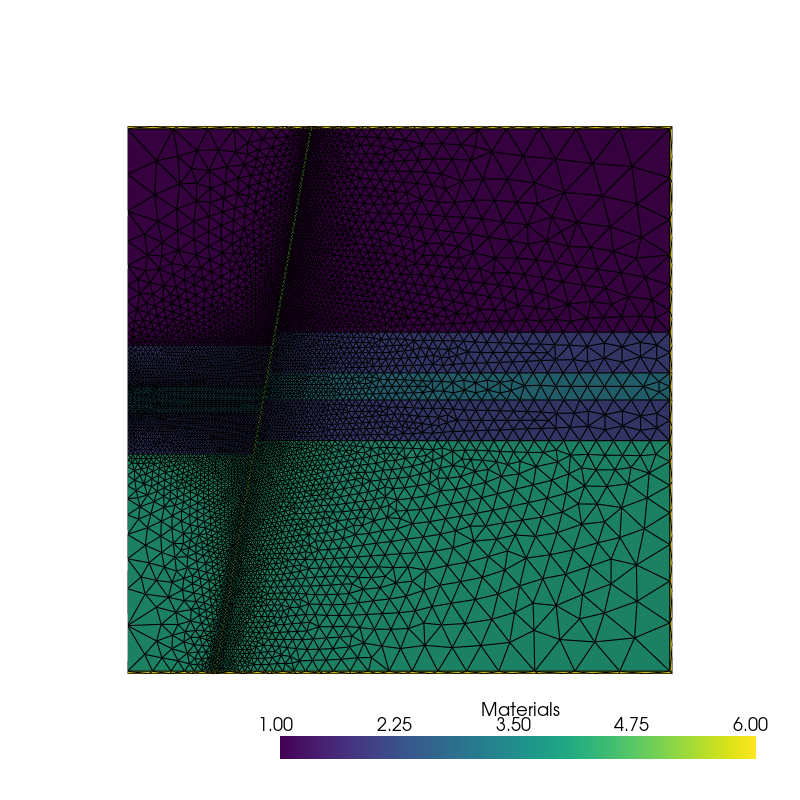

importing parameters from an Excel or CSV file that describe the geometry, model, and solver conditions.I often use a combination of ParaView to help me visualize the results, with analysis carried out in Python with the VTU files imported using PyVista.įor inspiration, beyond just executing the tests, Python allows work-flows to be created that include: While ParaView has a Python interface, when focusing on analysis and post-processing within Python, PyVista is a helper module for the Visualization Toolkit (VTK) which supports VTU file-formats. In regards to post-processing which includes initial visualization and analysis, ParaView is a very popular visualization tool used within academia that supports the VTU output format of ELMER. Given GMSH was the most popular and I noted it supported importing 3D CAD models in the STEP format, I choose that option. In regards to pre-processing, according to ELMER’s documentation, 44% of users choose GMSH, 20% of users choose Salome, and the remaining are scattered among further options.
#GMSH PYTHON FULL#
When approaching a full solution approach using FEA, three building blocks need to be considered: pre-processing, the solver itself, and post-processing, in which the results of the post-processing are often iterated upon by generating new geometry or modeling parameters.Ī simple flowchart of the building blocks of an FEA modeling and analysis system Approach Using this combination, you can create a very powerful customized solution for your needs and requirements. Python can then be used to integrate them. These building blocks can be tested individually with the command line or through Python. What is presented in this article is a practical guide to overcome these hurdles and provide a solution that can be built upon to create a very powerful FEA modeling and analysis system. Adding to the challenge, the post-processing tools didn’t serve my needs nor provide an obvious or well-documented path to be able to carry out an analysis. I additionally found that the modeling tools were lacking at best. While there are several good tutorials available, the foundation of these is typically based on using the GUI, which is not well suited for optimizing FEA solutions. I am not an expert on FEA theory nor Multiphysics packages (although I am familiar and have experience using them), and as such, getting started with ELMER wasn’t easy, nor is any Multiphysics package in my opinion.
#GMSH PYTHON FREE#
For me, what it meant is that I was able to continue to learn in my free time without creating conflicts of interest with essential work. In summary, ELMER is a 3D Multiphysics package that supports models for static and dynamic electromagnetics, mechanics, fluid dynamics, and heat transfer just to name a few. It was open-sourced in 2005 and licensed under the GNU General Public License. ĮLMER is a Multiphysics solver that was first developed by CSC in 1995 in collaboration with Finnish Universities, research institutes, and industry. In this article, I’ll describe a straightforward approach to combine ELMER with open-source meshing and post-processing tools using Python to create a very powerful FEA modeling and analysis system and provide a full example as well. If we’re not actively setting up a model, we’re using it to run simulations that often go through the night and even on weekends. While I have access to a premier commercial Multiphysics finite element analysis (FEA) platform, it isn’t easy to get a license, simply as there is rarely one available. Demonstrates the field from a magnet in proximity to a “tube” with a hole.Īs I enjoy learning new things and I find FEA incredibly enabling, I was intrigued to come across ELMER FEM (finite element method), an open-source 3D Multiphysics solver. Photo created with ELMER FEM and plotted with ParaView.


 0 kommentar(er)
0 kommentar(er)
